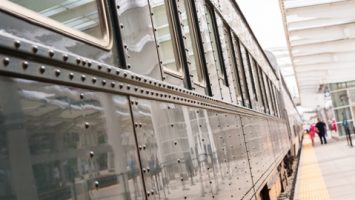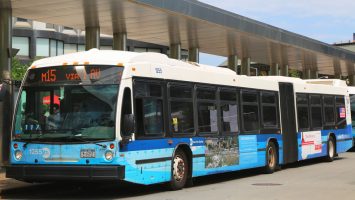
Andrea Foard the Transit Division Manager and Deputy Director for the Cobb County Department of Transportation (DOT). She oversees a $21 million operating budget, including the oversight of contracted operations for transit service that includes operations, maintenance, and customer service functions for CobbLinc, the county’s public transportation system.
CobbLinc is a 122 vehicle system offering fixed route local, commuter express, paratransit, and FLEX on-demand services. As the Transit Division Manager, Andrea is responsible for the complete oversight and management of the system, coordination with our regional transit/transportation partners, and management and growth of the division. She also plans and implements capital and operations programs for system enhancements and expansion.
Cobb County is a suburban county in the metropolitan Atlanta region in the state of Georgia. It is located approximately 20 miles northwest of the city of Atlanta (adjacent to Fulton County). The county’s population exceeds 750,000, making it the third most populous county in the state, which is nearly a 10% increase in population since the 2010 census. Within Cobb County are the cities of Acworth, Austell, Kennesaw, Marietta, Powder Springs, and Smyrna.
I had a chance to speak with Andrea about her work in Cobb County and the future of mobility.
Q: What does smart transportation look like to you?
A: Smart transportation is the integration of modern technology into transportation systems and infrastructure. Technology is utilized strategically to enhance our transportation systems to improve the customer experience, communication, safety, and reliability. Also, it’s a means for transportation agencies and departments to collect data to improve the operational efficiency of our systems and aid the decision making process for future capital investments.
Q: How will Cobb County approach mobility of the future?
A: Cobb County is diverse in its geographic and demographic characteristics. The county has rural, urban, and suburban areas and a diverse population in age, income, etc. Our approach to mobility of the future is to review and analyze population and employment trends (in the county and region) along with advances in transportation (connected and autonomous vehicles, bike/scooter sharing programs, etc.) and develop a plan that best serves the mobility needs of the population. We will begin our Comprehensive Transportation Plan 2050 update at the beginning of 2019 that will look at transportation and mobility services (traffic operations, roadways, public transportation, etc.) for the next 30 years.
Q: What do you anticipate will be the greatest challenge in achieving advanced mobility?
A: Three challenges come to mind in achieving advanced mobility – fiscal constraints, public education about new technologies, and keeping pace with rapidly changing technology.
Q: What do you think will be the biggest turning point in modern transportation, knowing what you do about technologies and systems that are near the market but not broadly adopted?
A: It’s amazing to me how far we have advanced in transportation since the invention of the automobile. I think the biggest turning point in modern transportation will be how all of the smart technology (from driver-less cars to traffic management/signal operations to emergency and transit vehicle pre-emption to smartphone travel apps and more) will be utilized together to improve the efficiency of our transportation operations and safety for the overall traveling public, whether they are in a car, on a bike, or walking.
Q: What was your biggest takeaway from the Smart Cities Connect Conference in Tampa?
A: My biggest takeaway from the Smart Cities Connect Conference was that many government and transportation agencies are encountering similar mobility challenges, underlying the importance to continue leveraging public/public and public/private partnerships.


